Anti-Ram Barriers: A Comprehensive Guide to Vehicle Security
When it comes to securing your property, the design of your perimeter security system plays a crucial role. It determines who can enter and exit your premises and helps protect against potential intruders trying to force their way in. Anti-ram barriers are essential tools for safeguarding your investment from external threats.
In this article, we will explore various types of active and passive perimeter security solutions that you can install around your property to protect it, your employees, and visitors from unauthorized vehicles.
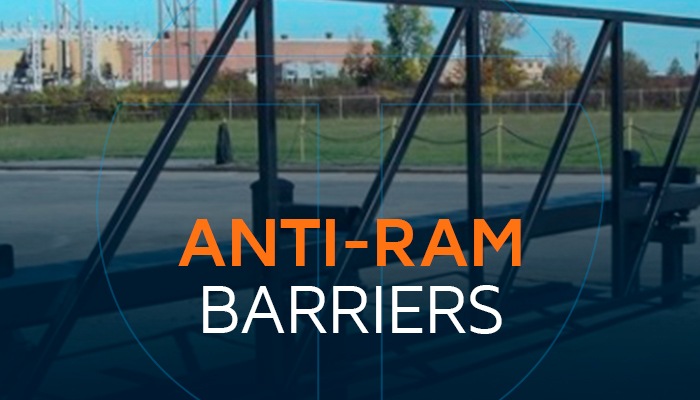
What Are Anti-Ram Barriers?
The primary purpose of anti-ram vehicle barriers is to protect against vehicle-related threats. They offer two main types of protection:
1. Crash Tested HVM (Hostile Vehicle Mitigation)
These devices are designed to stop any vehicle from entering a secured area at all costs. They can be manual or automated and are typically used in Class III or Class IV facilities.
Anti-ram barriers protect against ram-raiding, where a driver intentionally crashes into a building to gain access and steal or vandalize property. The damage caused by such incidents can be devastating for businesses, which is why many install anti-ram barriers around their properties.
While these incidents often occur at night when the building is unoccupied, they can also happen during the day, putting employees and visitors at risk. Additionally, vehicles may accidentally crash into buildings due to careless or drunk driving, especially if the building is near a road or at a sharp turn. Certain anti-vehicle barriers can prevent this from happening.
2. Perimeter Security Gates & Systems
These can be manual or automated. If automated, they allow access to those with the appropriate access control devices. They serve as a visual deterrent and help slow down potential intruders.
Many cities have dedicated areas for pedestrians, such as parks, walkways, and roads. To prevent vehicles from accessing these areas—whether by accident or with criminal intent—various barriers can be installed. These range from obvious options like bollards to more subtle ones like trees or reinforced street furniture.
DOD- and DoS-Certified Anti-Ram Solutions
Anti-ram barriers are designed to meet the requirements set by the Department of Defense (DOD) and the Department of State (DOS). Below are some key certifications:
K-Ratings
In the 1980s, the Department of State introduced K-ratings, a crash test certification for gates, fences, bollards, and other barrier types. This rating measured how much stopping power a barrier has relative to the weight and speed of a vehicle colliding with it perpendicularly. A standard K-rating weight is 15,000 pounds.
There are three possible K-ratings:
- A K4 barrier stops a 15,000-pound vehicle traveling at 30 mph.
- A K8 barrier stops a 15,000-pound vehicle traveling at 40 mph.
- A K12 barrier stops a 15,000-pound vehicle traveling at 50 mph.
M-Ratings
Since the introduction of K-ratings, ASTM International updated the system to "M-ratings." This change was made to account for more factors, including varying vehicle weights, velocities, and penetration distances. Vehicles weighing 15,000 pounds are classified as medium-sized (M) trucks under this system.
Here’s what each M-rating means:
- An M30 barrier can stop a 15,000-pound vehicle traveling at 30 mph.
- An M40 barrier can stop a 15,000-pound vehicle traveling at 40 mph.
- An M50 barrier can stop a 15,000-pound vehicle traveling at 50 mph.
Penetration Levels
ASTM also established penetration levels, which measure how far past the barrier the vehicle travels. This rating ranges from P1 to P4:
- P1: The vehicle travels up to 3.3 feet beyond the barrier.
- P2: The vehicle travels between 3.31 and 23 feet beyond the barrier.
- P3: The vehicle travels between 23.1 and 98.4 feet beyond the barrier.
- P4: The vehicle travels more than 98.41 feet beyond the barrier.
An example of an ASTM rating is M50-P1, which indicates the barrier can stop a 15,000-pound vehicle going 50 mph, with the vehicle traveling no more than 3.3 feet beyond the barrier.
Read More On Understanding Crash Ratings
Anti-Ram Barrier Applications
You’ve likely seen anti-ram barriers—also known as hostile vehicle mitigation barriers—in front of many public venues. Some specific applications include:
- Airports
- Department of Defense buildings
- Department of State buildings
- Border patrol locations
- Law enforcement buildings
- Large retail stores
- Distribution centers and warehouses
- Showrooms
- Schools
- Loading docks
- Data centers
- Utilities/Power stations
- Banks
Passive vs Active Anti-Ram Barriers
Anti-ram vehicle barriers can be divided into two categories: passive and active. Here's a closer look at each:
Passive
Passive barriers are fixed in place and do not allow vehicles to pass through. They protect an area away from a vehicle access point. Examples include:
- Berms
- Walls
- Ha-ha barriers
- Fixed bollards
- Fences
- Reinforced street furniture
- Engineered planters
- Water obstacles
- Jersey Barriers
Active
Active barriers are found at vehicular access control points in a perimeter system. They can be installed at entrances to parking garages or other buildings. They can serve as barriers for inspection or screening and can be operated to allow passage. Examples include:
- Retractable bollards
- Rising-wedge barricades
- Crash gates
- Crash beams
- Surface-mounted plates and wedges
The Different Anti-Ram Solutions
There are several anti-ram solutions available on the market. The choice depends on factors such as the type of building you own and the level of risk you face. Below are four common solutions:
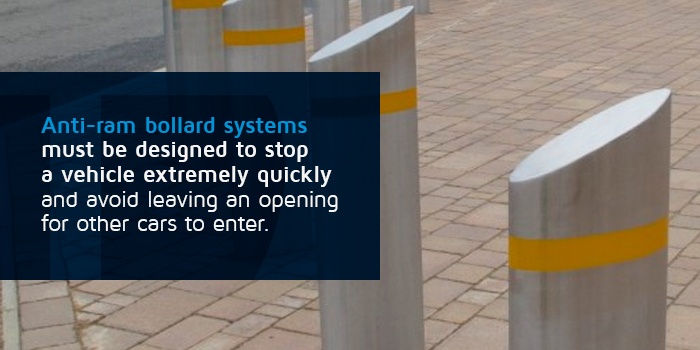
1. Anti-Ram Bollards
Anti-ram bollards consist of a cylinder, usually made of steel, and are installed in the ground with a deep concrete footing for stability. This prevents vehicle entry while allowing pedestrians and cyclists to pass through.
Bollards can also be made of reinforced concrete and steel sections. They must be designed to stop a vehicle quickly and avoid leaving openings for other vehicles to enter.
Customization options include ornamental steel, anti-rusting capabilities, and internal illumination. However, installing traditional bollards requires digging several feet into the ground, which could interfere with underground utilities. In such cases, shallow foundation bollards can be used to prevent overturning.
When choosing between removable and fixed bollards, consider your needs for temporary access control versus long-term security.
Removable Bollards
These bollards can be retracted or removed manually or mechanically. They are ideal for occasional access control. They come with different locking mechanisms depending on the required security level and can be installed and removed quickly without damaging the ground.
They are great for managing crowds and vehicles during events or temporary situations. For example, they can be placed in parking lots or streets to keep vehicles away from high foot traffic areas.
One type of retractable bollard is the rising bollard, which functions similarly to a security gate. While some are hydraulic, TYMETAL bollards are manually operated, requiring less excavation and being more resistant to corrosion.
Fixed Bollards
Unlike removable models, fixed bollards provide long-term security. They can be mounted or embedded and are best suited for permanent facilities with a higher risk of vehicle-based attacks. Examples include government buildings, airports, retail stores, warehouses, stadiums, and schools.
Fixed bollards are popular due to their ease of installation and lack of need for removal. They are a reliable choice for continuous protection.
Mixed Arrays
TYMETAL offers a solution that combines both fixed and removable bollards in one line, allowing for flexible access when needed.
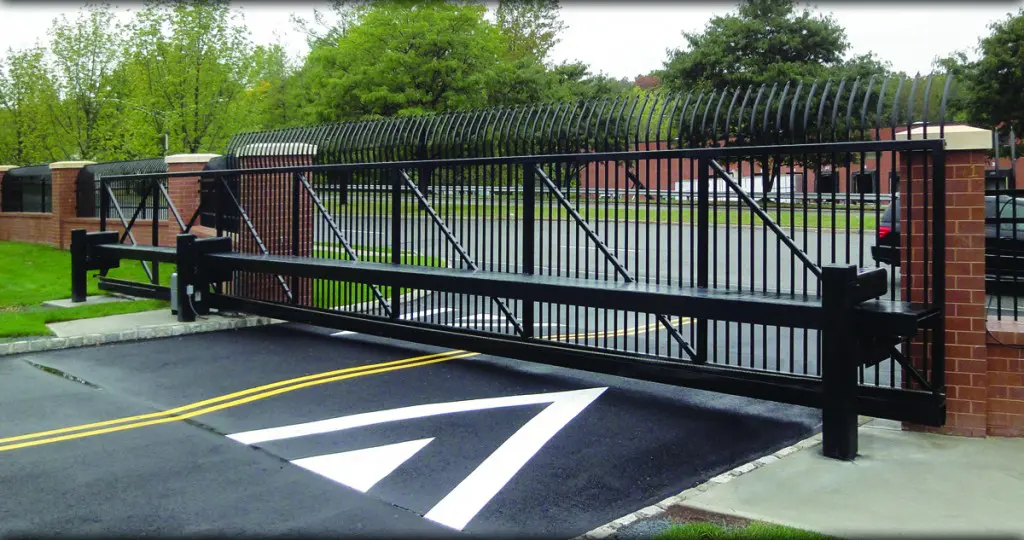
2. Anti-Ram Gates
Anti-ram gates open and close automatically or manually to control vehicle access at high-security locations such as military installations, correctional facilities, and airports.
Examples of anti-ram gate systems include:
- Cantilever slide gate: Ideal if there's space on one side to slide the gate horizontally. It doesn't require overhead supports or ground tracks and is usually automated.
- Vertical lift gate: Raised to allow vehicle entry or exit. Suitable for limited side space. Usually automated.
- Overhead slide gate: Supported by a track system and overhead beam. Opens by sliding to one side. Requires less space than a cantilever gate and is usually automated.
- Swing gate: Most suitable for low-traffic areas. Can be automated, but crash-rated models only swing out toward the unsecured side. Consider the distance and time needed for the gate to open and close.
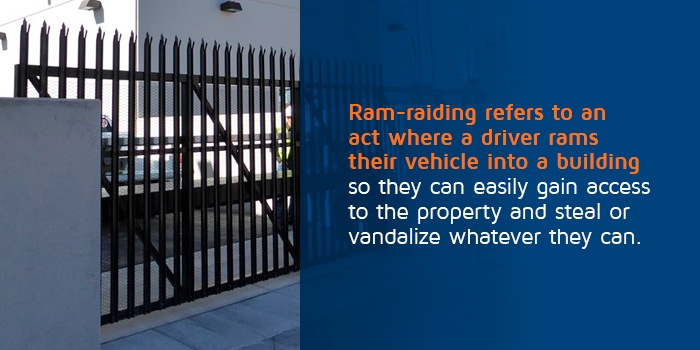
3. Anti-Ram Fences
Fences can also be designed as anti-ram systems. Anti-ram fences are ideal for properties requiring high-level security, either due to a higher risk of attack or the presence of sensitive information.
A common solution involves cable restraints placed at bumper height, often hidden within planting. These are held in place by bollards or posts. The combination of the bollard/post foundations and the resistance of the cable ensures a crash rating. Various crash-rated options are available based on a site-specific threat assessment.
Fences with cable systems allow for considerable deflection before the vehicle is stopped, meaning the vehicle can partially penetrate the perimeter before being halted. The amount of deflection depends on the distance between the concrete “deadman.†Our system does not use deadman installations, so the layout is determined by site conditions and threat assessments.
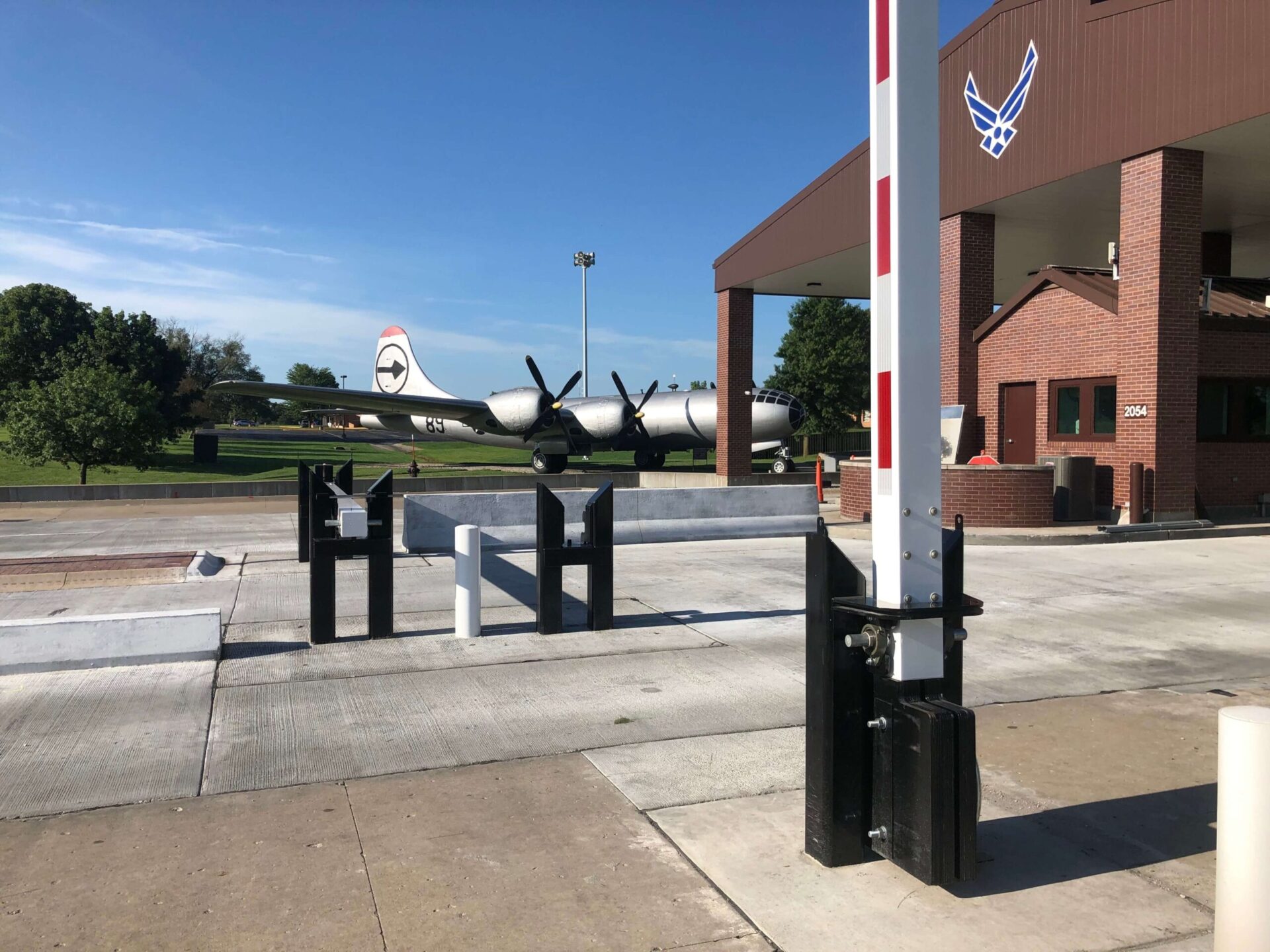
4. Anti-Ram Beams
Think of a drop-arm crash beam as a stronger version of a barrier you might see at a parking garage entrance. It consists of a crash beam, support and pivot assembly, anchoring and locking mechanisms, and cast-in-place concrete buttresses.
Crash-rated beams feature a strong steel cable that connects to the buttresses when the arm is lowered. The arm is lifted and lowered using a pneumatic or hydraulic system or manually with a counter-balanced arm.
While you can purchase crash-rated drop beams, they tend to be less effective compared to other active barriers.
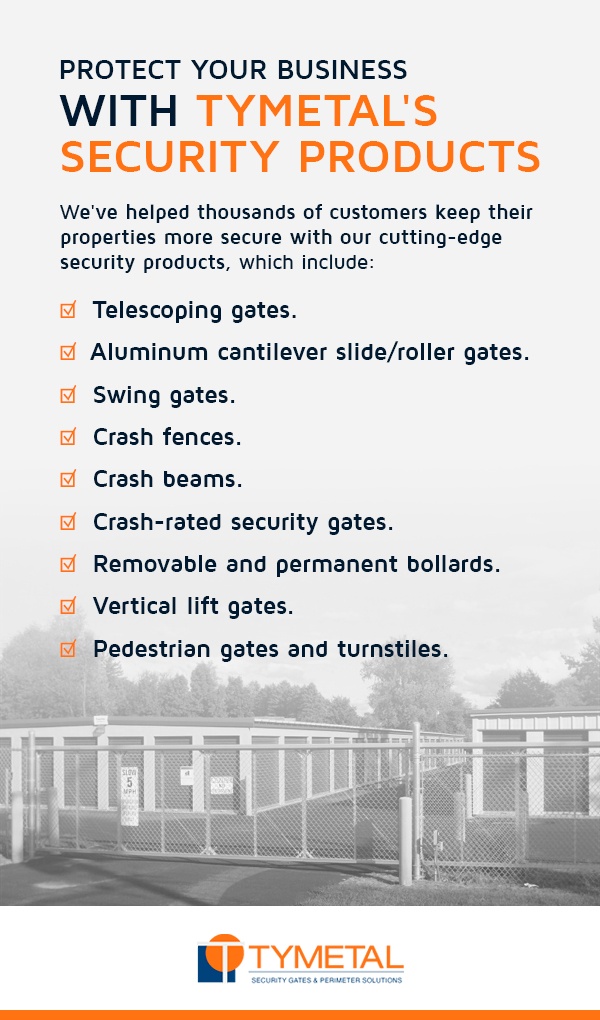
Protect Your Business With TYMETAL’s Anti-Ram Security Products
TYMETAL is the leading manufacturer of security gates in the United States, offering commercial security gates, correctional gate systems, and many other types of crash barriers. Since our founding in 1985, we’ve helped thousands of customers secure their properties with our innovative security products, including:
- Telescoping gates
- Aluminum cantilever slide/roller gates
- Swing gates
- Crash fences
- Crash beams
- Crash-rated security gates
- Removable and permanent bollards
- Vertical lift gates
- Pedestrian gates and turnstiles
Customized Gate Design
In addition to our high-quality pedestrian and vehicle gates, we also offer design services and provide customized specifications and drawings for your project. We aim to deliver the best security solution with the greatest lifetime value. Our most up-to-date specifications and drawings are always available on our website, and an experienced team of specification experts is ready to assist with any custom project needs.
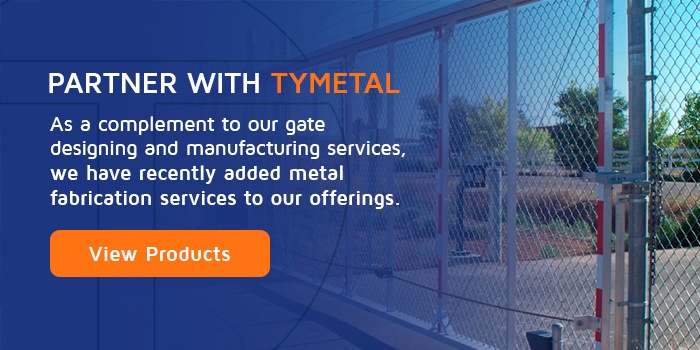
New York’s Number One Fabrication Partner
As a complement to our gate designing and manufacturing services, we have recently added metal fabrication services to our offerings. As the top fabrication partner in New York, we work with clients throughout the Northeast and beyond, including Massachusetts, Connecticut, Rhode Island, Maine, New Hampshire, Vermont, Pennsylvania, New Jersey, and Delaware.
Our metal fabrication services include:
- Plasma cutting
- Laser cutting
- Sand blasting
- Robotic welding
- CNC bending
- CNC machining
- Metal painting
- AWS Certified Welders
If you have any questions about our products or services, feel free to reach out. You can fill out our online form or call us at 888-978-GATE (4283).
Metal Bearings ,White Metal Bearing,Metal Ball Bearings,Precision Steel Balls
Ningbo Metal Sharing Supply Chain Management Co., Ltd , https://www.sharescm.com